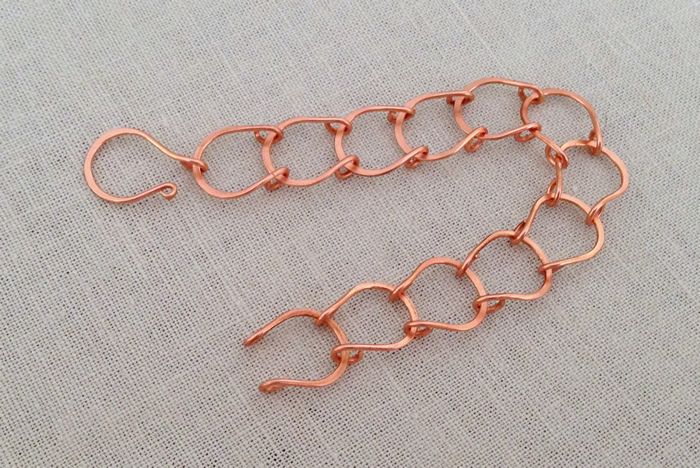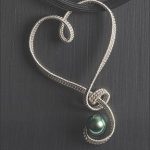Clay beads have become increasingly popular in the world of jewelry making, offering a unique and versatile alternative to traditional materials. Their natural beauty and wide range of colors make them an exciting addition to any jewelry collection.
In this article, we will explore the art of making clay beads for jewelry, from understanding different types of clay to designing and assembling stunning pieces. Whether you are a beginner or an experienced crafter, this guide will provide you with all the necessary information and techniques to create your own personalized clay bead jewelry.
The appeal of clay beads lies not only in their aesthetic appeal but also in their versatility. With clay, you can create beads in various sizes, shapes, and textures, allowing for endless design possibilities. Each bead becomes a unique work of art, reflecting your personal style and creativity. From simple round beads to sculpted masterpieces, the possibilities are limitless.
Understanding the different types of clay suitable for bead making is essential for achieving desired results. Various factors such as hardness, texture, and color play a role in determining which type of clay is best suited for your project. In the next section of this article, we will delve deeper into the different types of clay available and offer recommendations for beginners.
Whether you are new to bead making or already have experience working with clay, selecting the right tools and materials is crucial for successful results. A combination of basic tools such as rolling pins, shaping tools, cutters, and brushes will be needed to shape and embellish your clay beads.
Equally important is using high-quality materials that ensure durability and longevity. In the following section, we will discuss these tools and materials in detail along with tips on where to find them.
Get ready to embark on an exciting journey through the world of clay bead jewelry-making. Join us as we explore various techniques for shaping clay beads, adding texture and patterns, baking and finishing them flawlessly, designing beautiful jewelry pieces using these handmade beads, and maintaining their pristine condition. Embrace your creativity and dive into the art of clay bead making – a truly rewarding and fulfilling craft.
Understanding Different Types of Clay for Bead Making
Clay beads are a popular choice for jewelry making due to their versatility and unique aesthetic. However, not all clays are suitable for bead making, so it’s important to understand the different types of clay available and their qualities.
One of the most common types of clay used in bead making is polymer clay. This type of clay is easy to work with, as it is soft and pliable. Polymer clay comes in a wide range of colors that can be blended together to create custom shades. It also retains its shape well during baking, making it ideal for intricate bead designs.
Another type of clay commonly used for bead making is air-dry clay. As the name suggests, this clay dries when exposed to air, eliminating the need for baking. Air-dry clay is softer than polymer clay and may require additional support while drying to maintain its shape. It comes in various colors, but can also be painted or decorated after drying.
For beginners, oven-bake clay is often recommended due to its ease of use and accessibility. This type of clay bakes hard and durable after being heated in an oven. Oven-bake clay typically comes in neutral colors that can be painted or glazed once baked.
When choosing a type of clay for bead making, consider factors such as desired finish (matte or shiny), durability, and color options. Experimenting with different clays will help you discover which type suits your preferences and style best.
To get started with bead making using these different types of clays, gather the necessary tools such as rolling pins, cutting tools, bead rollers, and molds. These tools will assist you in shaping the beads according to your desired design.
Understanding the characteristics and qualities of different types of clays will allow you to make informed decisions when selecting materials for your bead-making projects. Whether you choose polymer clay, air-dry clay, or oven-bake clay, each has its own unique qualities that can enhance your jewelry creations.
Choosing the Right Tools and Materials
When it comes to making clay beads for jewelry, choosing the right tools and materials is essential for a successful project. Having the proper tools ensures that you can work with the clay effectively and achieve the desired results.
Additionally, using high-quality materials ensures that your beads will be durable and long-lasting. In this section, we will discuss the necessary tools for clay bead making, the importance of selecting high-quality materials, and provide tips on where to find them.
Essential Tools for Clay Bead Making
To create clay beads, you will need a few essential tools. Firstly, you will need a work surface which can be smooth and non-porous such as a sheet of glass or acrylic. This allows you to easily roll and shape your clay without it sticking or becoming misshapen. You will also need a rolling pin to flatten your clay evenly.
Another important tool is a set of bead rollers or bead molds. These specialized tools help you create consistent and uniform bead shapes quickly. Bead rollers come in various sizes, allowing you to make different bead sizes effortlessly.
Other necessary tools include cutting blades or knives for shaping clay, needle tools for puncturing holes in beads before baking, and sandpaper or emery boards for smoothing out any rough edges after baking.
Importance of Selecting High-Quality Materials
Using high-quality materials is crucial for creating long-lasting clay beads that withstand wear and tear over time. When selecting clay for your beads, opt for reputable brands known for their durability and compatibility with baking temperatures. This ensures that your beads won’t crack or break during the baking process.
Additionally, use high-quality findings such as bead caps, ear wires, jump rings, and clasps when designing jewelry with clay beads. These findings should be made from materials like sterling silver or gold-filled metal to avoid tarnishing or discoloration over time.
Tips on Finding the Necessary Tools and Materials
When starting out with clay bead making, it can be challenging to find the right tools and materials at first. However, there are several places you can look to gather everything you need. Craft stores often have a wide selection of polymer clay brands and other necessary tools like bead rollers, cutting blades, and conditioning machines.
Online marketplaces and websites dedicated to jewelry making also provide a vast range of tools and materials for clay bead making. These platforms offer convenience and allow you to compare prices and read customer reviews to ensure you’re purchasing high-quality materials.
You can also join online communities or forums dedicated to clay bead making where members share their recommendations for trusted suppliers. Don’t hesitate to ask fellow crafters for suggestions if you’re having trouble finding specific tools or materials.
By choosing the right tools and using high-quality materials, you set yourself up for success in creating beautiful clay beads for your jewelry designs.
Preparing Clay for Bead Making
Before diving into the exciting world of shaping and designing clay beads, it is crucial to ensure that the clay is properly prepared. Properly preparing the clay will not only make it easier to work with but also result in high-quality, durable beads. In this section, we will discuss the process of kneading and conditioning clay, removing air bubbles, and provide step-by-step instructions on how to prepare clay for bead making.
Kneading and Conditioning Clay
Kneading and conditioning clay is an essential step in preparing it for bead making. This process helps to soften the clay, making it more pliable and easier to shape. To begin, take a small amount of clay and gently roll it between your hands, applying firm but gentle pressure. Gradually increase the pressure as you continue rolling until the clay becomes smooth and elastic. Repeat this process with each color or type of clay you are working with.
Once the clay is rolled into a smooth ball, start conditioning it by folding it in half. Use your palm to press down firmly on the folded piece of clay before folding it in half again. Continue this folding and pressing process several times until the clay feels soft, consistent, and free from any lumps or air pockets.
Removing Air Bubbles
Air bubbles can weaken or cause imperfections in baked clay beads, so it is important to remove them before shaping your beads. To eliminate air bubbles effectively, start by taking a small portion of conditioned clay and knead it for a moment until you have formed a ball shape.
Next, flatten the ball into a rounded disc shape using your palm or a rolling pin. Inspect the surface of the flattened disc for any visible air bubbles trapped within the clay. If you spot any bubbles, use a needle tool or toothpick to gently pierce them from one side of the disc to the other. Be careful not to press too hard, as this can distort the shape of the clay.
Step-by-Step Instructions
- Begin by conditioning your clay by kneading it until it becomes soft and pliable.
- Roll a small portion of conditioned clay into a smooth ball.
- Flatten the ball into a rounded disc shape using your palm or a rolling pin.
- Check for any visible air bubbles on the surface of the flattened disc and gently pierce them with a needle tool or toothpick.
- Repeat these steps for each color or type of clay you plan to use in your bead making.
By following these simple steps, you can ensure that your clay is properly prepared and free from any imperfections before moving on to shaping and designing your beads. Taking the time to prepare your clay will greatly contribute to the quality and longevity of your finished jewelry pieces, allowing you to fully enjoy and showcase your creativity with clay beads.
Techniques for Shaping Clay Beads
When it comes to shaping clay beads, there are several techniques you can use to achieve the desired results. Each technique offers its own unique look and style, allowing you to create truly personalized pieces of jewelry. In this section, we will explore different shaping techniques such as rolling, pinching, and molding, providing detailed instructions for each technique along with accompanying visuals.
Rolling Technique
The rolling technique is one of the most common methods used to shape clay beads. To begin, take a small piece of clay and roll it between your palms until it forms a smooth ball. For more uniformity in size, you can use a small measuring device or template. Once you have achieved the desired shape and size, you can then add decorative elements such as textures or patterns before proceeding to bake the bead.
Pinching Technique
The pinching technique is ideal for creating shallow bowls or rounded shapes with an organic feel. Start by taking a small piece of clay and gently pinch it between your thumb and fingertips. Gradually work your way around the piece, pinching and shaping it into the desired form. This technique allows for more freedom in creating irregular shapes or adding texture through fingermarks.
Molding Technique
Using molds is another popular method for shaping clay beads. You can find various molds in specialized craft stores or make your own using silicone putty or mold-making materials. Simply press the clay into the mold until all areas are filled evenly, then gently remove the bead from the mold once it has hardened slightly. This technique allows for consistent shapes and intricate details that may be difficult to achieve solely by hand.
Regardless of which shaping technique you choose, it’s important to maintain consistency throughout your bead making process. Here are some tips to keep in mind:
- Ensure that your hands are clean and free from oils or residue before handling the clay to prevent any contamination.
- Work on a clean surface with enough space to comfortably shape the beads without hindrance.
- Experiment with different shapes and sizes to add visual interest and variety to your jewelry designs.
By using these techniques, you can create a wide range of bead shapes and styles, allowing for endless possibilities in your jewelry designs. Remember to have fun and embrace the creative process as you shape unique clay beads for your jewelry pieces.
| Technique | Description |
|---|---|
| Rolling | A common method of shaping clay beads by rolling clay between palms or using a measuring device for uniformity. |
| Pinching | A technique that involves pinching clay between fingers to create rounded or irregular shapes. |
| Molding | Using molds to shape clay beads, resulting in consistent shapes with intricate details. |
Adding Texture and Patterns to Clay Beads
When it comes to clay bead making, adding texture and patterns is a crucial step that allows you to create unique and visually appealing beads. This section will explore various methods and techniques that you can use to incorporate texture and patterns into your clay beads, giving them a distinct and personal touch.
One popular method for adding texture to clay beads is stamping. Stamps with intricate designs or patterns can be pressed onto the surface of the clay, leaving behind a raised impression. This technique is perfect for creating uniform patterns on multiple beads or achieving precise details.
To use this method, simply roll out your conditioned clay into a sheet of desired thickness, then gently press the stamp onto the surface. Make sure to apply even pressure and lift the stamp straight up to avoid smudging the design.
Carving is another technique that allows you to add depth and texture to your clay beads. With a sharp tool like a needle or an X-Acto knife, you can carefully carve intricate designs directly into the clay surface. This technique works especially well on softer clays or when carving detailed motifs on larger beads. When carving, start with light pressure and gradually increase it as needed. Take your time and move slowly to ensure precise results.
Using texture plates is yet another way to create interesting textures on your clay beads. Texture plates are typically made of rubber or silicone and come in various patterns such as flowers, leaves, or geometric shapes. To use a texture plate, press it firmly onto rolled-out clay until the pattern is transferred onto the surface. You can experiment with different plates or combine multiple textures for more complex designs.
By incorporating these techniques into your clay bead making process, you can elevate your creations from simple spheres to intricately textured pieces of art. Experiment with different tools and methods until you find ones that suit your style best. Remember that adding texture and patterns allows you to showcase your creativity and make your clay beads truly one-of-a-kind.
Baking and Finishing Clay Beads
After shaping and adding texture to your clay beads, the next step is to properly bake and finish them. Baking is a crucial process that ensures the durability and longevity of your beads. It is important to follow the recommended baking instructions for different types of clay to achieve the best results.
Before placing your clay beads in the oven, it is essential to preheat the oven according to the instructions specified by the clay manufacturer. This will ensure that your beads bake evenly and thoroughly. Make sure to use an oven thermometer to accurately gauge the temperature inside your oven.
Different types of clay require different baking temperatures and times. For example, polymer clay usually bakes at temperatures ranging from 250°F to 275°F (120°C to 135°C), while air-dry clay may need lower temperatures around 200°F (93°C). Check the packaging or manufacturer’s instructions for specific baking requirements.
Once your beads have finished baking, allow them to cool completely before handling or finishing them. This will prevent any heat-related damage or distortion. To achieve a professional finish, you can sand your beads using fine-grit sandpaper or a nail buffer block. Sanding helps smooth out any imperfections on the surface of your beads.
After sanding, if desired, you can apply a polish or sealant to enhance the appearance and protect the beads. There are various options available for sealing clay beads, such as varnishes specifically designed for polymer clay or clear acrylic spray sealers for air-dry clays. Follow the product instructions carefully when applying these finishes.
Finishing touches like sanding and sealing not only contribute to a polished look but also help protect your clay bead jewelry from wear and tear over time. By taking these extra steps during the finishing process, you can ensure that your clay beads remain beautiful and durable for years to come.
Designing and Assembling Jewelry with Clay Beads
Designing jewelry with clay beads allows for a world of creativity and endless possibilities. Whether you prefer a minimalist look or bold statement pieces, clay beads offer versatility and uniqueness that can complement any style or outfit. In this section, we will explore some ideas and inspiration for designing jewelry with clay beads, discuss different types of complementary materials to pair with clay beads, and share tips on assembling and stringing clay bead jewelry.
When it comes to designing jewelry with clay beads, the sky is the limit. One idea is to create a focal point by using a larger, more intricately designed clay bead as the centerpiece of a necklace or bracelet. Pair it with smaller, complementary-colored beads or contrasting materials such as metal or gemstone accents to create visual interest.
Another design option is to combine different shapes and sizes of clay beads to create a more eclectic and playful look. Mix round beads with disc-shaped or cylindrical ones to add dimension and texture. You can also incorporate other materials like glass or wooden beads to add variety and contrast.
Additionally, using different techniques in assembling clay bead jewelry can enhance its overall design. Consider incorporating wirework, knotting techniques, or macramé to add unique elements to your designs. Playing with different lengths and layering necklaces or bracelets can also create an eye-catching effect.
When stringing your clay bead jewelry, be mindful of finding the right balance between durability and flexibility. Use sturdy beading wire or nylon cord that can withstand the weight of the beads while still allowing movement. Experiment with different types of clasps or closures that suit your design aesthetic and make it easy for the wearer to put on and take off the jewelry.
| Design Ideas | Materials to Pair With Clay Beads |
|---|---|
| Create a focal point with a larger, intricately designed clay bead | Metal accents or gemstone beads |
| Mix different shapes and sizes of clay beads for an eclectic look | Glass or wooden beads for variety and contrast |
| Incorporate wirework, knotting techniques, or macramé into your designs | Copper wire or waxed cord for a bohemian touch |
| Experiment with different lengths and layer necklaces or bracelets for an eye-catching effect | Mixed metal findings or leather cord for added texture |
Maintenance and Care for Clay Bead Jewelry
After creating beautiful clay bead jewelry, it is important to know how to properly care for and maintain these pieces so that they can be enjoyed for years to come. By following a few simple steps, you can keep your clay bead jewelry looking its best and prevent any damage or deterioration.
One of the first steps in maintaining clay bead jewelry is to clean it regularly. To clean clay beads, simply use a soft cloth or brush dipped in warm water with a mild soap. Gently scrub the beads, taking care not to apply too much pressure. Rinse them thoroughly with clean water and pat them dry with a soft towel. Avoid using harsh chemicals or abrasive materials, as these can damage the surface of the beads.
In order to preserve the appearance of clay bead jewelry, it is important to handle it with care. Avoid dropping or banging the jewelry against hard surfaces, as this can cause cracks or chips in the beads. Additionally, be mindful of exposing your clay bead jewelry to extreme temperatures or direct sunlight for prolonged periods of time, as this can lead to fading or discoloration.
Storing clay bead jewelry properly is another essential aspect of maintenance. To prevent tangling and scratching, it is recommended to store each piece separately in a fabric-lined jewelry box or pouch. You can also use individual compartments or small plastic bags to keep the pieces separated and protected.
By following these simple maintenance tips, you can ensure that your clay bead jewelry remains in excellent condition for years. Taking proper care of your creations will allow you to continue enjoying their unique beauty and personal significance. So go ahead and embrace your creativity by making stunning clay bead jewelry that will bring joy and style into your life.
Conclusion
In conclusion, clay beads offer a world of creative possibilities in jewelry making. Throughout this article, we have explored the beauty and versatility of clay beads, discussed different types of clay and techniques for shaping and adding texture to beads, and provided tips on baking, finishing, designing, and maintaining clay bead jewelry. Now it’s time for you to embrace your creativity and start making your own unique clay bead jewelry.
By understanding the different types of clay available and selecting high-quality tools and materials, you can ensure that your creations are not only beautiful but also long-lasting. Proper preparation of the clay is crucial, as it allows for smooth shaping and helps eliminate air bubbles that could cause cracks during baking. Experiment with various shaping techniques and incorporate texture and patterns to add visual interest to your beads.
Once your beads are shaped and textured to perfection, it’s important to bake them at the recommended temperatures and times according to the type of clay used. This will ensure that your beads are durable and last a lifetime. Don’t forget about the finishing touches – sanding, polishing, or sealing your beads can enhance their appearance even further.
Designing and assembling jewelry with clay beads is where you can truly express your personal style. Explore different combinations with complementary materials such as metals, gemstones, or other types of beads to create truly one-of-a-kind pieces. Remember to consider proper maintenance for your clay bead jewelry by cleaning them gently and storing them properly.

Welcome to my jewelry blog! My name is Sarah and I am the owner of this blog.
I love making jewelry and sharing my creations with others.
So whether you’re someone who loves wearing jewelry yourself or simply enjoys learning about it, be sure to check out my blog for insightful posts on everything related to this exciting topic!





